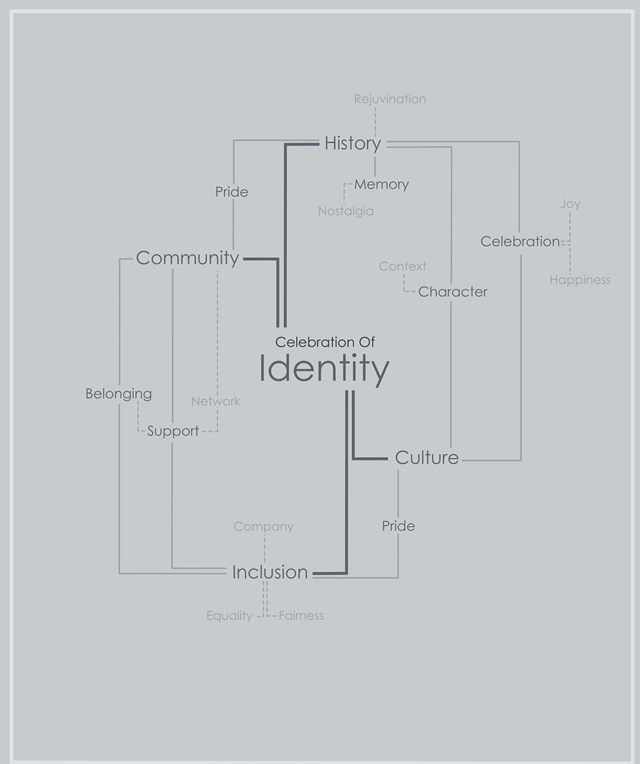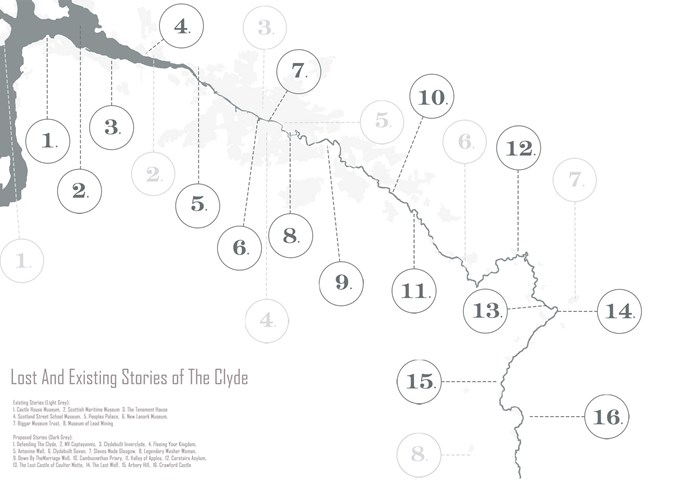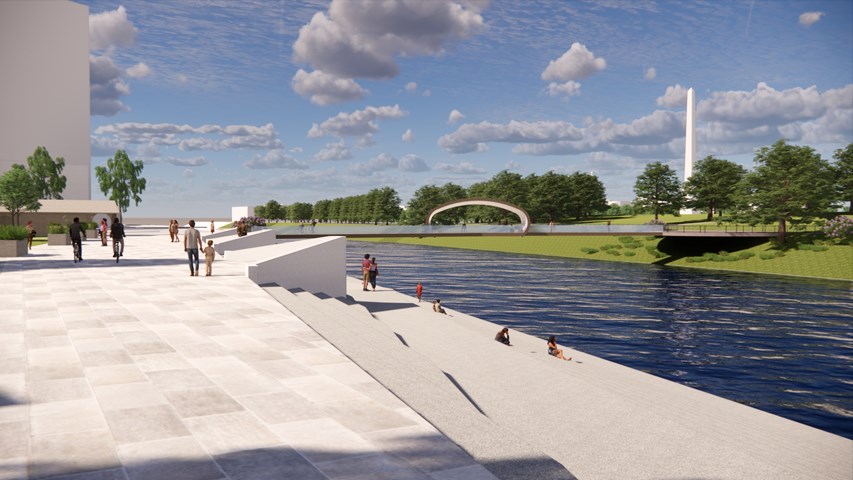Ghosts Of the Clyde
A Compendium of Memories
The project focuses on creating a historical corridor providing architectural ‘Time Capsules’ to immerse the user in a celebration of a historical story. Providing community buildings that perpetuate the identity of the local area. This is important because throughout Glasgow and the wider Clyde area there is a loss of history, the things that have been key factors in an area’s development and continuation. Along with a loss of community which causes greater isolation and a rise in mental health issues. This is seen not only in the region but also across the country as a whole. These two issues are intertwined as the loss of history causes a lack of identity and belonging within the wider scope of an area contributing to a lack of community and the absence of a support system for people within the neighbourhood.
To provide this, I intended to utilise the River Clyde, a prominent feature of the natural landscape that has be vital in the development and perpetuation of many settlements throughout time. From the worship of the Prehistoric era to its participation in trans-Atlantic trade along with being the means that allowed for the creation of many shipbuilding phenomena. The river is rich in embodied uncelebrated history.
The project provides a master plan combing both the told and untold stories of communities along the River Clyde along with a framework of how to analyse these stories to provide an architectural time capsule. Finally focusing in on one story, providing an example of how these can be manifested in the built environment. The master plan is intended to provide a historical corridor though the west of Scotland, creating a journey of stories, that can be added to as history unfolds. Although the sites and stories are linked along a common theme and route each one can stand alone as an intervention that tells a story and celebrates a community and their role within the wider environment.
Manifesto:
The River Clyde flows through the west of Scotland carving a path in the natural landscape. It is a prominent feature in all the areas it flows through and is rich in embodied uncelebrated history. The river has been the catalyst for the development and perpetuation of settlements throughout time. It was worshiped in the prehistoric era, participated as a key player in trans-Atlantic trade and allowed for the creation of ship building icons. But much of this history has been lost to time, areas that once held key elements of a communities identity have been left to nature. Currently, the existing celebrations of history along the river Clyde barely scratch the surface of what has been.
By looking at the river I will be able to produce a successful scheme that connects areas of historical and cultural significance forming a corridor that celebrates lost history and tradition through the west of Scotland. Providing individual interventions for each story that create an architectural time capsule to immerse the user in a celebration of history and identity. All the stories and memories are connected and linked along a common theme and route but each one will stand alone as an individual intervention that manifests the story in the built environment, celebrating a community and its identity in the wider locale.
Within each individual intervention I will immerse the user in the story of that area. To do this is will look at how to story tell within architecture, focusing on building journey and creating atmosphere that evokes emotion. I will investigate how using different techniques such as, shadow creation, connection to nature and building scale stimulates the senses in order to fully immerse the user and evoke emotion.
By providing a frame work on how to analyse each individual story, memory or tradition I will provide the structure for this scheme to be implemented in different areas and along different paths. Along with this it allows for further stories to be added to while history unfolds as history is never ending.

Mind-map Showing the Effects of Celebrating an Areas Identity
There is a habit removing or hiding it history and not preserving buildings for use and signifying their importance leaving derelict site and buildings throughout the Clyde area. By removing these areas of importance from their neighbourhood in turn you lose the areas identity and this contributes to a loss of community and connection to the city along with perpetuation the rise in mental health issues. By celebrating a places identity and history, bringing these areas back to life for their communities we can bring people back together and create spaces for communities, increasing their connection to each other and to the city as a whole.

Map of the Clyde Highlighting Existing Celebrations of History and Opportunities for New Ones
The Clyde is the main river that flows in the west of Scotland. It is a major feature in the natural landscape. Not only is it a prominent feature in the natural landscape but it is also key element in the development of places, memories and stories. This map highlights some of the told and untold stories that run along the riverside. Within this project I explored various stories and created an architectural time capsule of one, which can be used as an example of how to produce this corridor of memories, celebrating lost stories.

The Master Plan of an Individual Story
The image shows the master plan in perspective, highlighting the Architectural Time Capsule in the foreground and along with other part of the master plan such as the proposed bridge, re-imagining of the Peoples Palace, New Housing Development and a more celebrated entrance of the north of the Green.

Element of the Master plan
Part A looks at the creation of a more celebrated entrance on the north edge of Glasgow Green along with the re-implementation of the train station. Part B Looks at the Redesigning of the Housing Development to give it greater connection with the green. Part C looks at reinventing the Peoples Palace and reinstating it original purpose as a place to store the people memories. Part D Looks at re-connecting the Gorbals with Glasgow green Finally, Part E aim to immerse the user in a story or memory in this case that is the story of the washer woman.

Site Plan of Part E of the Masterplan
The Building aims to provide an immersive experience celebrating the Story of the Glasgow Washer Woman. This story if split into three parts. Part 1 is the Glasgow washer woman: The collective act of washing and getting clean has been prevalent throughout Glasgow's history. Before the creation of the bathhouse, or Steamie, the women from a certain area would gather together and head down to the river to perform the ritual of cleaning. The washing of cloths became a social and community activity, a time for women to communicate and support one another. Part 2 is the Goddess Clota: Depicted as a lone washer woman seated on the edge of the river or a ford the Goddess Clota was the Celtic deity of the Clyde. They worshiped the water and regarded the river as sources of fertility. The Clyde was known as the purifying as it carried large amounts of mud to sea when it flooded. an earlier name for it was Clwyd meaning heard from a distance. These qualities of the river were reflected in the Goddess she was known to be pure and hold the divine ear. Part 3 Is the Bean Nighe who is depicted as a lone washer woman. She is a female spirit or banshee, a messenger from the other-world. She can be seen washing blood from cloths at the ford of a river, it is believed that these are the cloths of those about to die. If approached with caution, a person may be able to get between her and the river they are entitled to the granting of three wishes or the telling of three truths. This varies within different versions of the legend.







